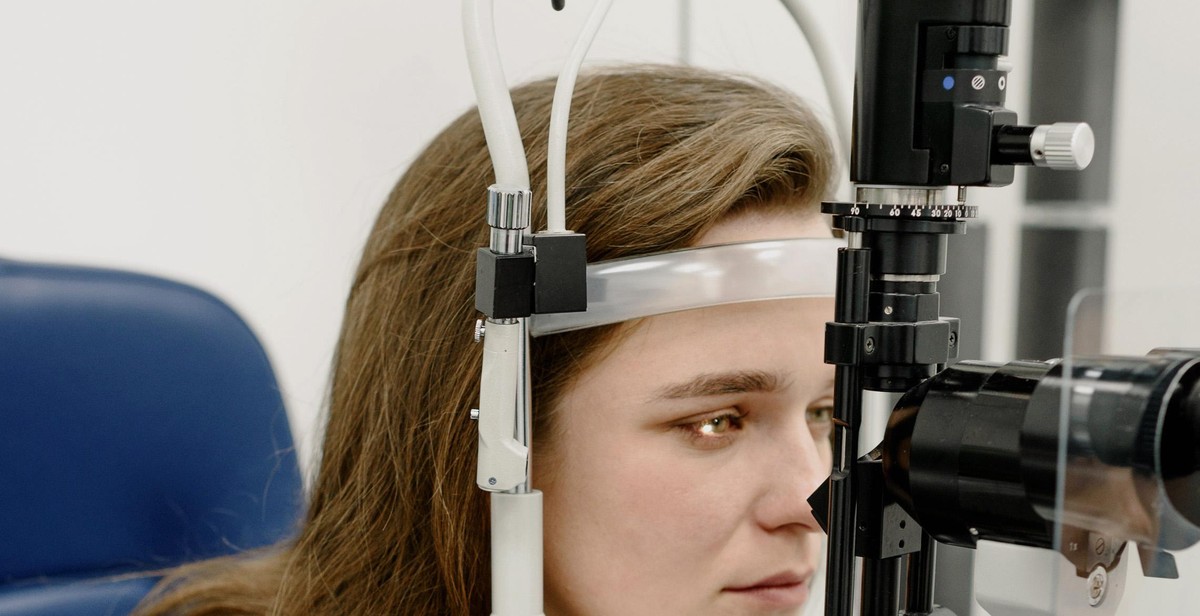How to Develop a Patient-Centered Care Model: Focusing on Individual Needs and Preferences
As a professional article writer and content creator, I have had the privilege of working with several healthcare organizations, and one of the most important aspects of healthcare delivery that I have come to appreciate is the need for patient-centered care. In this article, I will share my personal experience and insights on how healthcare organizations can develop a patient-centered care model that focuses on individual needs and preferences.
Understanding Patient-Centered Care
Patient-centered care is a healthcare delivery model that prioritizes the needs, preferences, and expectations of patients. It involves treating patients as partners in their care, involving them in decision-making processes, and considering their unique circumstances and perspectives.
Developing a patient-centered care model requires a shift in mindset from a provider-centered approach to a patient-centered approach. This means acknowledging that patients are experts in their own lives and experiences, and that their input is vital to achieving the best possible outcomes.
The Benefits of Patient-Centered Care
Research has shown that patient-centered care leads to better health outcomes, higher patient satisfaction, and increased adherence to treatment plans. It also helps to build trust between patients and providers, which is crucial for effective communication and collaboration.
Next, I will discuss some practical steps that healthcare organizations can take to develop a patient-centered care model that meets the unique needs and preferences of their patients.

Understanding Patient-Centered Care
Patient-centered care is a healthcare approach that emphasizes the importance of meeting the individual needs and preferences of patients. In this model of care, patients are recognized as active participants in their healthcare journey, with their unique values, beliefs, and goals taken into account when making decisions about their treatment.
Defining Patient-Centered Care
Patient-centered care is a holistic approach to healthcare that prioritizes the patient’s needs and preferences. It involves working collaboratively with patients to develop a treatment plan that aligns with their values, beliefs, and goals.
Healthcare providers who practice patient-centered care recognize that each patient is unique and has their own set of circumstances that influence their health. They take into account the patient’s cultural background, family situation, and social context when making decisions about their care.
This approach to healthcare also involves creating a supportive and empathetic environment that fosters open communication between patients and healthcare providers. Patients are encouraged to ask questions, express their concerns, and participate in decision-making about their treatment.
The Importance of Patient-Centered Care
There are several benefits to adopting a patient-centered care model. For one, it can lead to better health outcomes for patients. When patients feel heard and understood, they are more likely to adhere to their treatment plan and experience better health outcomes.
Patient-centered care can also improve patient satisfaction and increase trust in healthcare providers. When patients feel that their healthcare provider is invested in their well-being and is taking their individual needs into account, they are more likely to have a positive experience and feel satisfied with their care.
Finally, patient-centered care can lead to more efficient and effective healthcare delivery. When patients are involved in decision-making about their care, they are more likely to understand their treatment plan and adhere to it. This can lead to fewer hospital readmissions and lower healthcare costs overall.
| Element | Description |
|---|---|
| Collaborative | Patients and healthcare providers work together to develop a treatment plan that aligns with the patient’s values, beliefs, and goals. |
| Individualized | The patient’s unique needs, preferences, and circumstances are taken into account when making decisions about their care. |
| Empathetic | Healthcare providers create a supportive and empathetic environment that fosters open communication between patients and providers. |

Developing a Patient-Centered Care Model
Developing a patient-centered care model requires a deep understanding of the patient’s needs, preferences, and expectations. The process involves a collaborative approach between the healthcare provider and the patient to ensure that the care plan is tailored to meet the individual’s unique needs.
Step 1: Identifying Patient Needs and Preferences
The first step in developing a patient-centered care model is to identify the patient’s needs and preferences. This can be achieved through various methods, such as conducting patient surveys, holding focus groups, and collecting feedback from patient advisory councils. By understanding the patient’s needs and preferences, healthcare providers can tailor their care plans to meet the patient’s unique needs.
Tools to Identify Patient Needs and Preferences
- Patient Surveys
- Focus Groups
- Patient Advisory Councils
Step 2: Establishing a Collaborative Relationship
Establishing a collaborative relationship between the healthcare provider and the patient is critical to developing a patient-centered care model. This involves building trust, engaging in open communication, and actively involving the patient in the decision-making process. By involving the patient in the care plan, healthcare providers can ensure that the patient’s preferences and values are respected.
Ways to Establish a Collaborative Relationship
- Building Trust
- Engaging in Open Communication
- Actively Involving the Patient in Decision-Making
Step 3: Incorporating Patient Feedback
Incorporating patient feedback is essential to developing a patient-centered care model. This involves regularly seeking feedback from patients and using that feedback to improve the care plan. By incorporating patient feedback, healthcare providers can ensure that the care plan is continually evolving to meet the patient’s changing needs.
Methods for Incorporating Patient Feedback
- Regularly Seeking Feedback from Patients
- Using Patient Feedback to Improve the Care Plan
- Continuously Evolving the Care Plan to Meet the Patient’s Changing Needs
| Step | Description |
|---|---|
| Step 1 | Identifying Patient Needs and Preferences |
| Step 2 | Establishing a Collaborative Relationship |
| Step 3 | Incorporating Patient Feedback |

Implementing a Patient-Centered Care Model
Implementing a patient-centered care model requires a comprehensive approach that focuses on individual needs and preferences. Here are some key steps to consider:
Training Staff on Patient-Centered Care
One of the first steps in implementing a patient-centered care model is to train staff on the principles of patient-centered care. This can include training on communication skills, active listening, empathy, and cultural competence. Staff should also be trained on how to involve patients and their families in care decisions and how to address any concerns or questions they may have.
Training should be ongoing, with regular opportunities for staff to practice and receive feedback on their patient-centered care skills.
Creating a Supportive Environment
A supportive environment is essential for patient-centered care. This can include creating a welcoming and comfortable physical environment, as well as ensuring that patients have access to the resources and support they need.
It’s also important to create a culture that prioritizes patient-centered care. This can involve incorporating patient feedback into decision-making processes, encouraging staff to take a patient-centered approach in all interactions, and recognizing and rewarding staff who demonstrate exceptional patient-centered care.
Measuring the Success of a Patient-Centered Care Model
Measuring the success of a patient-centered care model is critical for identifying areas for improvement and ensuring that patients are receiving the highest quality of care. Some key metrics to consider include patient satisfaction scores, patient outcomes, and staff engagement and satisfaction.
Data should be collected regularly and analyzed to identify trends and areas for improvement. This information can then be used to make changes to the patient-centered care model and improve the overall quality of care.
| Key Steps | Description |
|---|---|
| Training Staff | Train staff on patient-centered care principles, including communication skills, active listening, empathy, and cultural competence. |
| Creating a Supportive Environment | Create a welcoming and comfortable physical environment and culture that prioritizes patient-centered care. |
| Measuring Success | Measure patient satisfaction, outcomes, and staff engagement and satisfaction to identify areas for improvement. |

Benefits of a Patient-Centered Care Model
A patient-centered care model is an approach to healthcare that focuses on the individual needs and preferences of patients. This model goes beyond just treating the medical condition, but instead, it involves the patient in their healthcare decisions and empowers them to take an active role in their treatment. Here are some of the benefits of a patient-centered care model:
Improved Patient Outcomes
One of the most significant benefits of a patient-centered care model is improved patient outcomes. When patients are actively involved in their healthcare decisions, they are more likely to adhere to their treatment plans and make lifestyle changes that can improve their health. This leads to better health outcomes, such as improved control of chronic conditions, reduced hospital readmissions, and a lower risk of complications.
Increased Patient Satisfaction
Another benefit of a patient-centered care model is increased patient satisfaction. Patients who feel heard and involved in their healthcare decisions are more satisfied with their care. They are more likely to trust their healthcare providers and feel more comfortable asking questions and sharing concerns. This can lead to better communication between patients and healthcare providers and ultimately, a more positive healthcare experience.
Reduced Healthcare Costs
A patient-centered care model can also lead to reduced healthcare costs. When patients are involved in their healthcare decisions and are more likely to adhere to their treatment plans, they are less likely to require costly interventions, such as hospital readmissions or emergency room visits. Additionally, when patients are more satisfied with their care, they are less likely to switch providers or seek care elsewhere, which can also reduce healthcare costs.
| Benefit | Description |
|---|---|
| Improved Patient Outcomes | Patients are more likely to adhere to treatment plans and make lifestyle changes that can improve their health. |
| Increased Patient Satisfaction | Patients feel more heard and involved in their healthcare decisions, leading to better communication and a more positive healthcare experience. |
| Reduced Healthcare Costs | Patients are less likely to require costly interventions and are more likely to stay with their healthcare providers, reducing healthcare costs. |

Conclusion
Developing a patient-centered care model can be a challenging but rewarding process. By focusing on individual needs and preferences, healthcare providers can improve patient outcomes and satisfaction.
It is important to involve patients and their families in the care planning process to ensure that their needs are being met. This requires effective communication, active listening, and a willingness to be flexible and adapt to changing circumstances.
Healthcare providers should also be aware of the cultural, linguistic, and socioeconomic factors that may impact a patient’s experience and adjust their care accordingly.
Implementing a patient-centered care model may require changes in organizational culture, training, and resources. However, the benefits of this approach are clear: improved patient outcomes, increased patient satisfaction, and a more fulfilling work environment for healthcare providers.
Ultimately, the goal of patient-centered care is to treat patients as individuals with unique needs and preferences, rather than simply as medical conditions to be treated. By prioritizing the patient experience, healthcare providers can improve the quality of care and make a positive impact on the lives of their patients.
